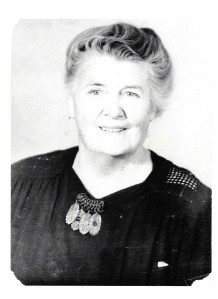
This is the first Courthouse in Smyth County, Virginia and, to my surprise, some of my ancestors had a hand in its creation! I found a lot of the information on this from searching historical societies after I listened to a podcast by genealogist Amy Johnson Crow. Amy’s podcast gave me the idea to search historical societies and libraries in the areas where I knew my ancestors lived. It turned out to be a useful tool in my research!
To learn the story of this courthouse, I had to go back to the formation of Smyth County, Virginia in 1832. The citizens of Wythe and Washington counties petitioned the Virginia legislature in July of 1831 for a new county as they had to travel great distances to court which entailed great hardships for them. So about one third of Washington County and a portion of Wythe County were finally surveyed and formed into a new county on February 23, 1832 named after General Alexander Smyth, a famed general of the War of 1812.
A Commission of five citizens was appointed to select a proper site for the county seat. According to the “Smyth County History” (p. 78), ” This Commission spent a night with Mr. Thomas Thomas (1766-1838), my 5th great-grandfather, on the South Fork, where a discussion arose concerning a name for the new county seat. Mrs. Freelove Cole Thomas, their hostess, opined that it would be fitting to name it in honor of Gen. Francis Marion, which was done.” So my 5th great-grandmother named the town to become the county seat and site of the new courthouse!
George T Lansdown was one of four men appointed by the governor to see about building a courthouse and jail. They took reported bids and plans for the construction. George T Lansdown was married to my 5th great-aunt, Virginia Anna Thomas. She was one of the daughters of Thomas Thomas and Freelove Cole.
Governor John Floyd commissioned fifteen justices of the peace to make up the county court. However, the courthouse was not a reality yet so it was decided that the county court would be assembled at the house of John Thomas (1798-1837) at Royal Oak. This John Thomas was the son of Thomas Thomas and Freelove Cole and my 5th great-uncle. So the court was organized and set in motion. The first circuit and superior courts of law and chancery were held at John Thomas’s house for two years until the courthouse was finally built and finished in 1834.
When I read the list of justices in the first court for Smyth County, I was surprised to find one of them was William Porter (1798-1867), my fourth great-grandfather! William Porter married Mary Polly Thomas, daughter of Thomas Thomas and Freelove Cole. Another interesting anecdote I found is that the elected Clerk of Courts, Robert Beattie, had a tavern in which he at times entertained President Andrew Jackson! It is not unlikely that my ancestors may have been acquainted with Andrew Jackson! William Porter was also one of the justices of the first grand jury and as the first act, they presented indictments against seven individuals, all for assaults!
“From this record and many others it appears that fighting was a favorite pastime in the early years of Smyth. In fact, the great majority of indictments brought into court were for assaults, gaming and violation of liquor laws.” (Smyth County History, p. 85)
More than court procedures had to be decided in the new Smyth County. The care of the poor had to be considered and the county was divided into 2 districts for this purpose. The first election in Smyth County was to choose three overseers of the poor in each district. William Porter, my ancestor, was among those elected. The sheriff collected eighteen and three-fourths cents off every tithable in the county as the poor rate fixed by the overseers of the poor. ( How do you get three-fourths of a cent?) Eighty-two acres were purchased for the poor farm in 1836. Two other collateral ancestors were also active in the formation of the poor farm, James Cole and Joseph Atkins.
I learned a lot by exploring historical societies and library sites for Smyth County and Virginia as well as other resources. To find out that some of my ancestors were involved in forming Smyth County, its courts and the poor farm gave me a new perspective of them. They were willing to contribute to and become involved in the community where they lived and were leaders in the community. This was the first time I came across the existence of a poor farm in this time period. It is reassuring to know that people took care of others less fortunate all through history! I am glad my ancestors were involved in helping others and, so far as I have found, none of them were brought to court for assault or other violations!


Sources:
Wilson, Goodridge, Smyth County, history and traditions. Kinsgport, Tenn.: Kinsport Press, 1932.
Library of Virginia: http://www.lva.virginia.gov
http://www.virginiamemory.com/collections.
Smyth County Historical and Museum Society in Marion, Virginia.









 Mack Howard Sturgill wrote a book “Abijah Thomas and his Octagonal House, which tells the story of the Thomas Family including John Thomas, Thomas Thomas, Freelove Cole and, of course, Abijah Thomas. Copies of the book are rare and may be found in Historical Societies. I am still trying to borrow a copy.
Mack Howard Sturgill wrote a book “Abijah Thomas and his Octagonal House, which tells the story of the Thomas Family including John Thomas, Thomas Thomas, Freelove Cole and, of course, Abijah Thomas. Copies of the book are rare and may be found in Historical Societies. I am still trying to borrow a copy.













